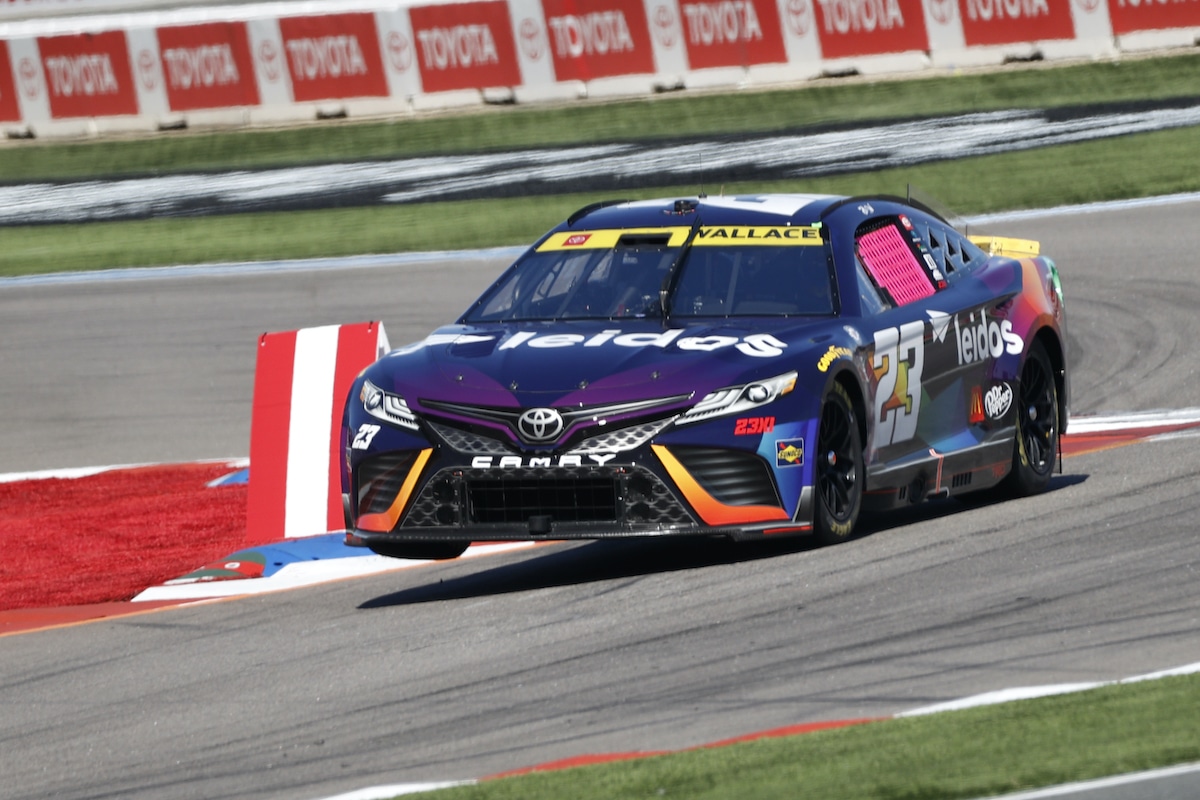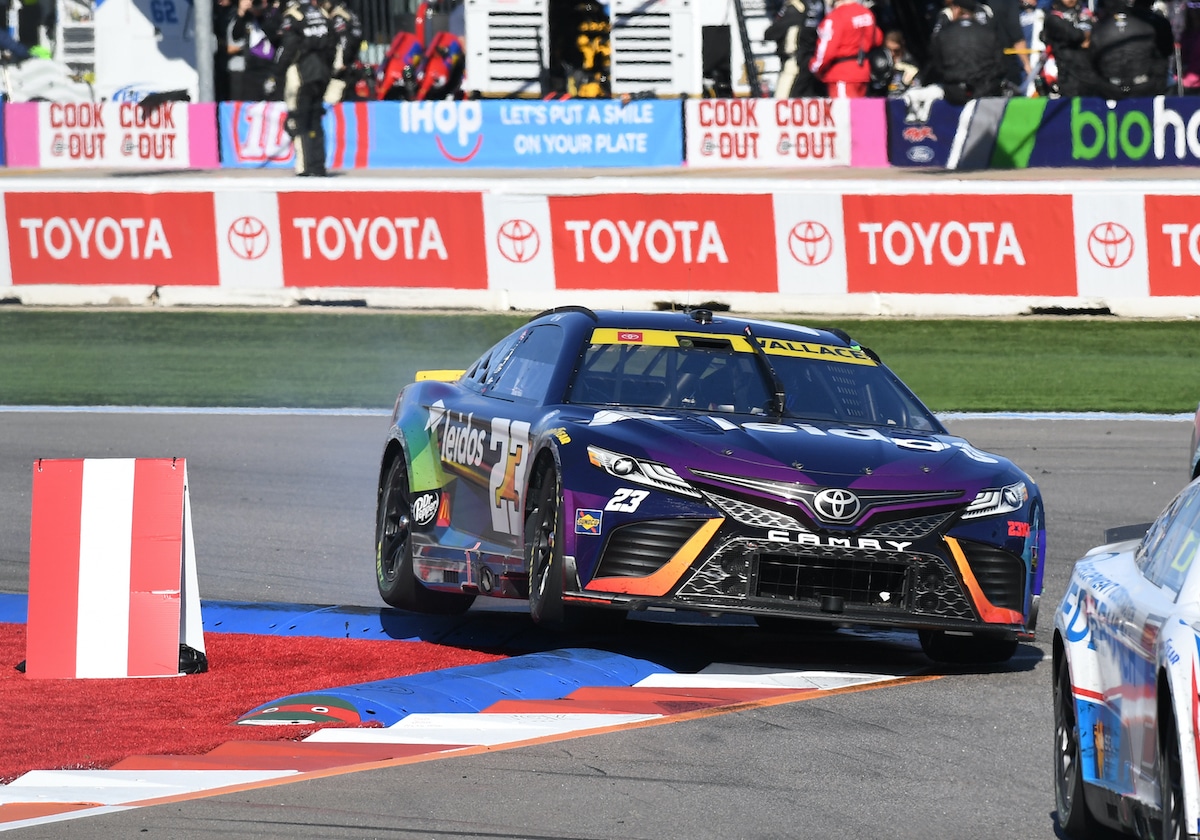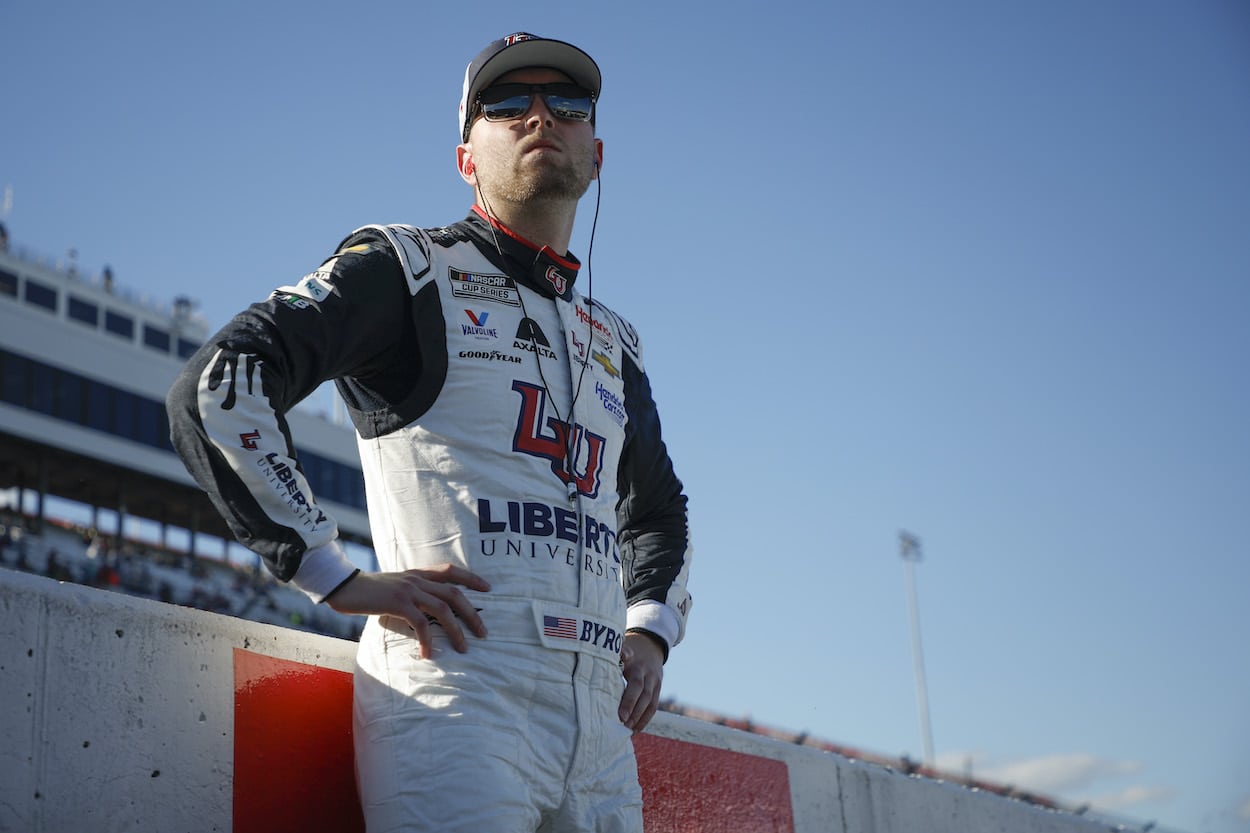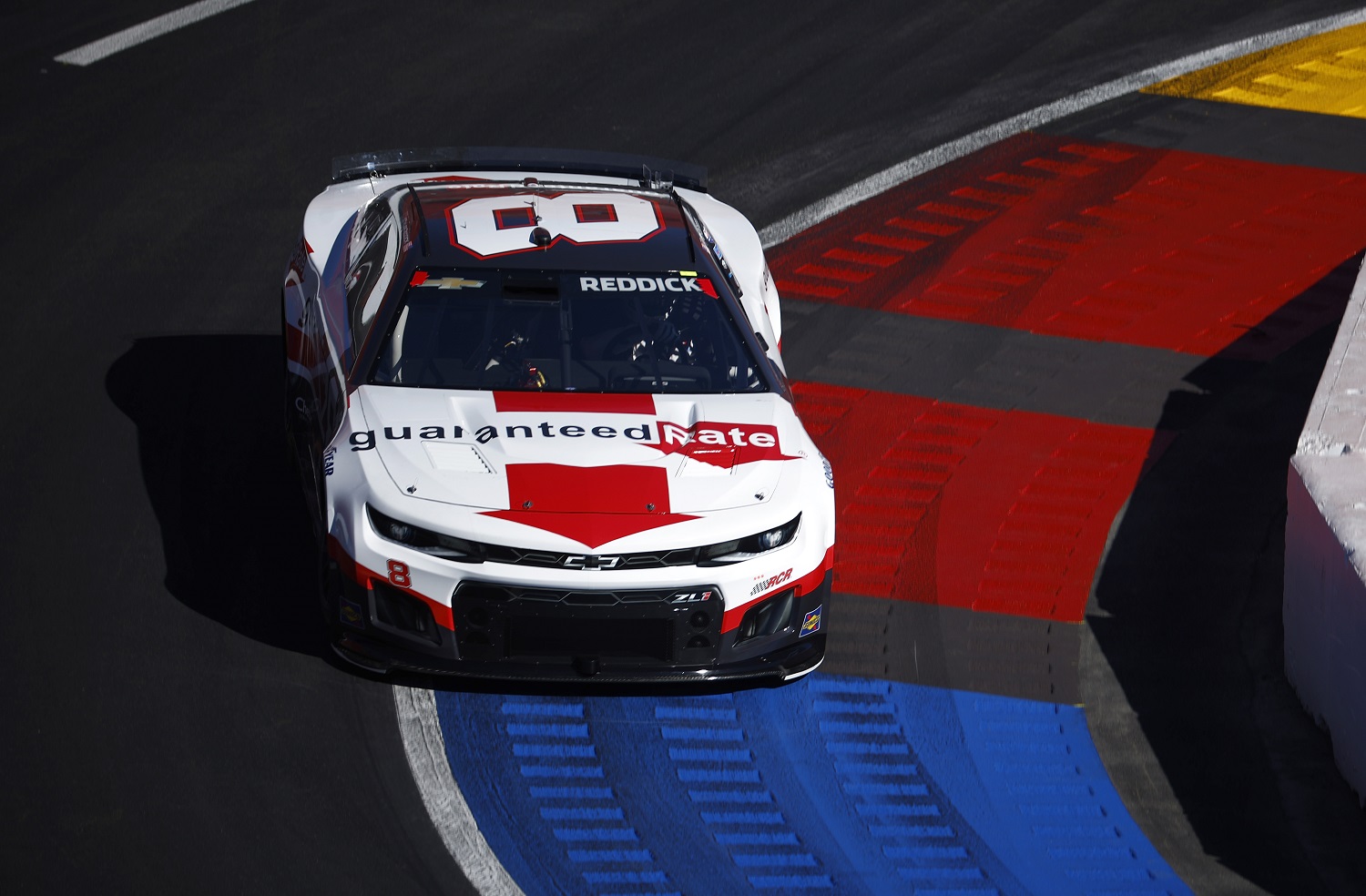
Tyler Reddick Exposed an Issue, and Now NASCAR Has 2 Months to Stave off Embarrassment When the Cup Series Reaches Martinsville
Conventional wisdom suggests that 500 miles in the Florida heat will be the definitive shakedown of the Next Gen car. Count on Denny Hamlin and Kevin Harvick to squeeze every bit of speed out of the engine and be there from start to finish at the Daytona 500. If they can’t break something under the hood in the course of normal racing, then the new NASCAR Cup Series car earns a passing grade.
But NASCAR fans and officials saw something concerning last weekend. Tyler Reddick managed to break something big a third of the way through what should have been the least stressful race since the days of 20-lap Busch Light Clashes.
Now, NASCAR has two months to address the issue, or else Martinsville race fans are in for the longest string of yellow flags in memory.
Tyler Reddick was in command at the Los Angeles Coliseum
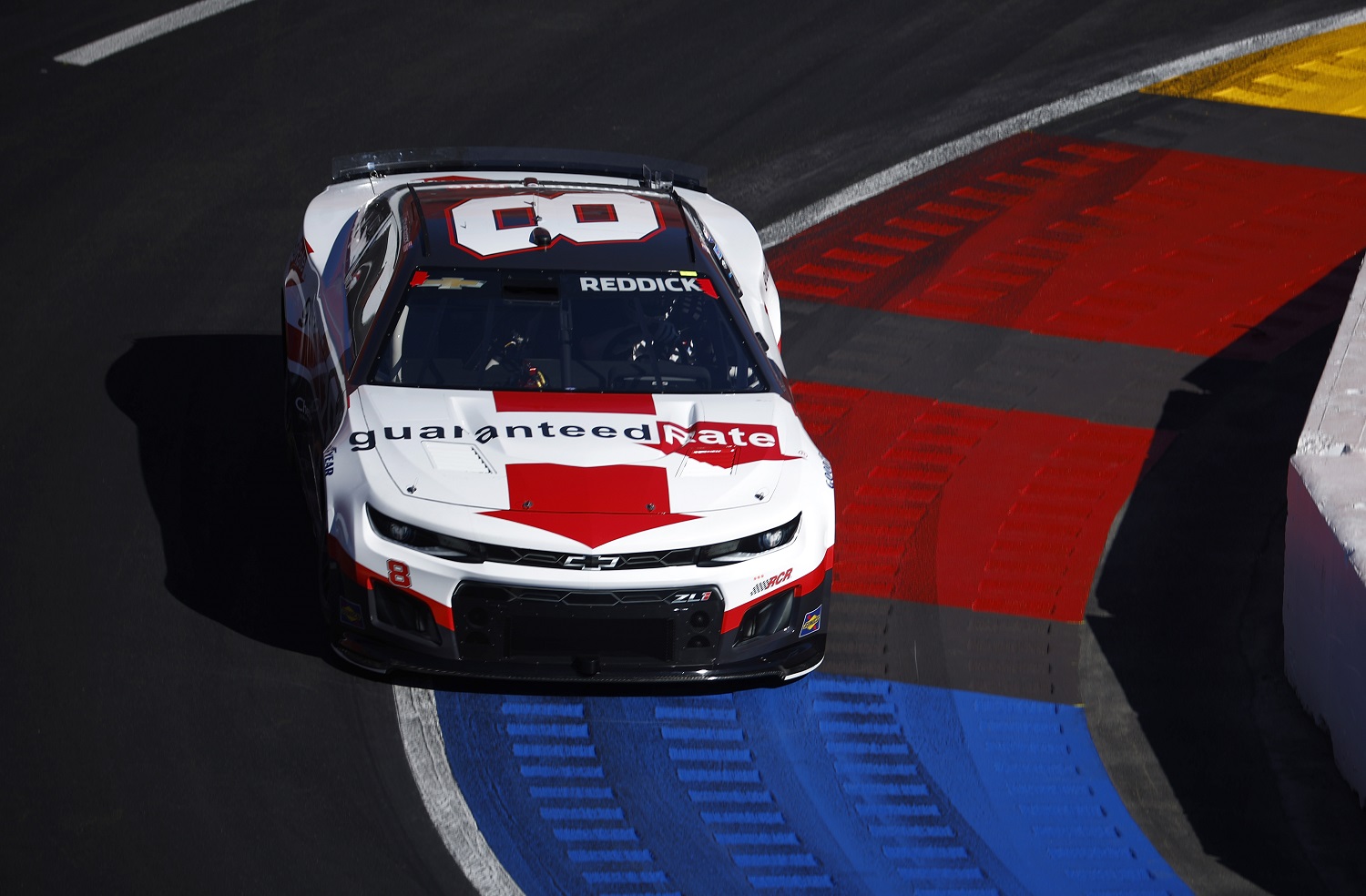
Sunday was turning into a beautiful day in the Los Angeles sunshine for Tyler Reddick, the California native entering his third full season in the NASCAR Cup Series. Reddick sailed through his heat in the Busch Light Clash, leading Chase Briscoe and Austin Dillon across the line.
That advanced him to the main, where he was leading under caution on Lap 53 when he slowed down in the No. 8 Chevy, ending his day. The initial thought was that the car’s transaxle broke. Upon further review, the issue was a damaged prop shaft, the result of the driver abruptly dropping the clutch while trying to warm the tires in anticipation of the green flag.
During the same caution, Briscoe’s No. 14 Ford experienced a drivetrain issue that looked similar to what Reddick experienced.
That’s not a good development for two reasons: There are a whole lot of Fords and Chevys in the Cup Series and a bunch of short-track races on the schedule in which drivers can be expected to hammer pretty hard on the clutch.
NASCAR and the manufacturers are investigating a Next Gen concern
The next NASCAR Cup Series test on a short track is 400 laps on the Martinsville half-mile oval on April 9. Though the Coliseum track is half the length, the Martinsville race will be six times as long.
“I think (the Coliseum) track being really small, it’s a cause of a little concern at Martinsville just because that much gear and that violent of a restart probably would be something to think about,” Dr. Eric Warren, director of NASCAR Programs for General Motors, told NBC Sports. “At the time, we hadn’t really seen that issue in the past, so we need to get into it a little bit.”
NASCAR and all the manufacturers will be scrutinizing the cars to determine whether it was a coincidental failure or a design flaw requiring a re-engineering. If it’s the latter, then the window for resolving the issue is tight but manageable.
One drawback, though, is the newly streamlined and standardized Next Gen era. Up to now, teams followed tight regulations but had room to innovate when it came to machining certain parts and finding extra speed. Now, they assemble their cars with chassis and parts built by vendors.
So, rather than the various Chevy and Ford teams coming at the problem from multiple directions, everyone awaits a solution from the top.
One important aspect of the Next Gen car is already earning high marks
A yellow flag coming down due to the sudden appearance of mysterious debris on the track is probably the most annoying stoppage in racing. A close second in the NASCAR Cup Series has to be the caution flag allowing a car to safely pit after cutting a tire but creating a minimal risk.
The No. 1 cause of cut tires in past seasons was sheet metal tearing into the rubber after contact between two cars or a driver scraping the wall. Not surprisingly, plenty of rubbing took place in the Busch Light Clash thanks to 23 cars fighting for position on a quarter-mile track, but cut tires were non-existent.
“The biggest win we saw today with the car itself is that we can bump and bang and not cut tires down,” winner Joey Logano said, according to Fox Sports. “For as much as cars were on each other’s doors, think about when we used to do that at Martinsville. (We’d) give each other a fender rip immediately. Next thing you know, your car is spinning out, (and) you have flat tires.”
Like Sportscasting on Facebook. Follow us on Twitter @sportscasting19.
